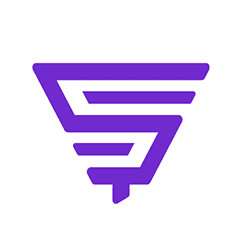With 47% of talent acquisition (TA) teams reporting being held back by manual processes or systems, several significant implications arise for these teams. The reliance on outdated methods can severely impact the efficiency and effectiveness of recruitment efforts. Here, we explore seven major pitfalls of manual recruiting processes and how they can hold you back.
1. Inefficiency in hiring processes
Manual processes often lead to inefficiencies, including longer time to hire and increased workload for recruiters. This inefficiency can result in delays in filling critical positions, which can impact an organization's overall productivity and operational effectiveness. TA teams must streamline their processes to remain competitive and responsive to hiring needs.
2. Increased risk of human error
Relying on manual systems increases the likelihood of human error in data entry, candidate evaluation, and communication. These errors can lead to miscommunications, overlooked candidates, and ultimately, poor hiring decisions. TA teams must minimize these risks to improve the quality of their hires.
3. Reduced scalability
Manual processes are typically not scalable. As organizations grow, hiring needs increase, and manual methods can quickly become unsustainable. This limitation hinders the ability of TA teams to scale their operations effectively and meet the growing demands of the business.
4. Limited data analytics and insights
Manual systems often lack the capability to collect and analyze data efficiently. This limitation prevents TA teams from gaining valuable insights into their recruitment processes, such as identifying bottlenecks, understanding candidate sources, and measuring the effectiveness of their strategies. Access to robust analytics is essential for data-driven decision-making and continuous improvement.
5. Poor candidate experience
Manual processes can lead to a disjointed and slow candidate experience, from application submission to feedback and communication. In today's competitive job market, providing a seamless and positive candidate experience is crucial to attracting top talent. Candidates who encounter cumbersome application processes are more likely to drop out or view the organization negatively.
6. Impact on recruiter morale and productivity
TA teams burdened by manual tasks often experience lower morale and reduced productivity. Recruiters spending excessive time on administrative tasks have less time to engage in strategic activities, such as building relationships with candidates and stakeholders. This imbalance can lead to burnout and high turnover within the TA team.
7. Need for technological investment
The significant impact of manual processes highlights the urgent need for investment in recruitment technology. Implementing applicant tracking systems (ATS), candidate relationship management (CRM) tools, and other automation technologies can streamline workflows, reduce errors, and enhance overall efficiency. Investing in technology improves current operations and helps future-proof the TA function against evolving demands.
Moving forward with recruitment automation
The fact that nearly half of TA teams are held back by manual processes or systems underscores a critical need for transformation within the recruitment landscape. By adopting technology solutions and automating repetitive tasks, TA teams can focus on strategic initiatives, improve the candidate experience, and ultimately drive better hiring outcomes.
At Symphony Talent, we offer cutting-edge solutions that empower talent acquisition teams to transcend traditional limitations. By reducing time spent on administrative tasks by 65%, our tools enable organizations to concentrate on what truly matters: forging genuine connections and nurturing a successful workforce.
Discover the potential of automation in "Efficiency Unleashed: 8 Ways Automation Simplifies Talent Acquisition."



